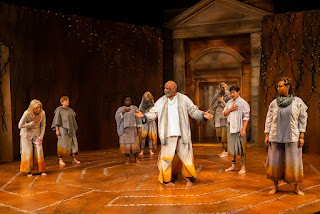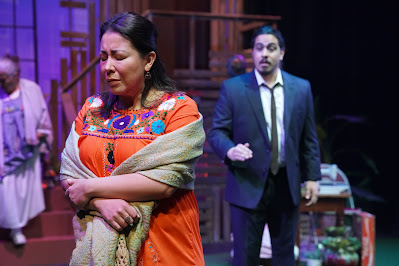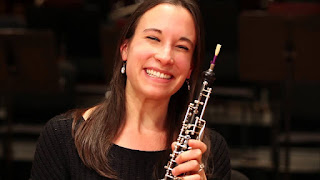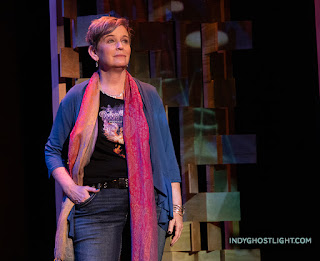Birth of tragedy as the signal of suffering under fate: 'Oedipus' at IRT

Oedipus tries to retain the control Thebes expects of him. James Still's direction of "Oedipus," Indiana Repertory Theatre' s production of Sophocles' tragedy, so powerfully represents the story that you could almost follow all the action without hearing much of what's said. Yet what's said thoroughly reinforces the action, with a mode of delivery that is bold, rhetorically elevated and definitely outside the conversational manner to which most theater grounded in realism has accustomed us. The cast's gestures and movement (credit also to Mariel Greenlee), headed magnificently in the title role by David Alan Anderson, are continually revealing. The set, showing facades of ancient Thebes fronted by a plaza on which the action flows, has formidable gates to the royal palace at upstage center. Carey Wong's design conveys a feeling of timelessness. Sara Ryling Clement's costumes remove the action from anything familiar to us: robes and bare feet a








